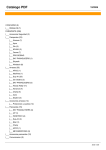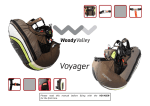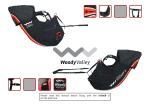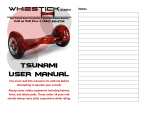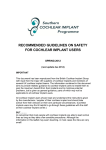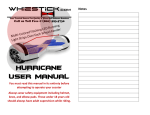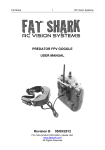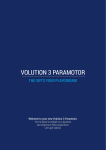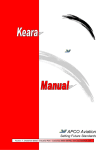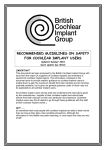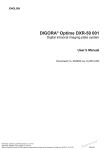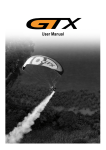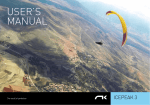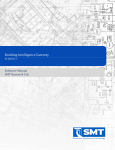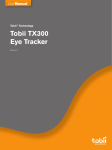Download ZENITH
Transcript
manual ZENITH 3 Windtech www.windtech.es ZENITH XS-S-sM-ML-L flight manual 4 > index > > > > > > congratulations ––––––––––––––––––––––––––––––– 5 warning & liability ––––––––––––––––––––––––––––– 6 construction & materials ––––––––––––––––––––––– 6 certification –––––––––––––––––––––––––––––––––– 7 best glide –––––––––––––––––––––––––––––––––––– 7 flight ––––––––––––––––––––––––––––––––––––––– 8 -- launch ––––––––––––––––––––––––––––––––––––– 9 -- strong wind –––––––––––––––––––––––––––––––––– 9 > thermal flying –––––––––––––––––––––––––––––––– 9 > flying in turbulence –––––––––––––––––––––––––––– 9 -- asymmetric tuck ––––––––––––––––––––––––––––– 10 -- frontal tuck –––––––––––––––––––––––––––––––– 10 -- asymmetric stall (spin) –––––––––––––––––––––––––– 11 -- landing –––––––––––––––––––––––––––––––––––– 11 > weather to fly ––––––––––––––––––––––––––––––– 12 > emergency procedures & quick descent techniques – 12 -- big ears ––––––––––––––––––––––––––––––––––– 12 -- spiral drive ––––––––––––––––––––––––––––––––– 12 -- b stall ––––––––––––––––––––––––––––––––––––– 13 > maintenance –––––––––––––––––––––––––––––––– 14 > warranty ––––––––––––––––––––––––––––––––––– 14 > technical specifications–––––––––––––––––––––––––15 > line measurements ––––––––––––––––––––––––––––17 > flight log ––––––––––––––––––––––––––––––––––– 19 5 > congratulations Congratulations on the purchase of your new paraglider The ZENITH is a very versatile wing and has been designed for all types of recreational flying, from long cross country and competition flying, to relaxing smooth evening and morning soaring flights. We strongly recommend that before you even unfold the ZENITH you read this manual carefully in order to be aware of any general limitations, performance characteristics, take off and flight characteristics, landing procedures, dealing with emergency situations and general maintenance. We appreciate your feedback, so please send us your comments, positive or negative, in regard to the Windtech range. You are the best feedback and support for future products, and please remember that we are always happy to give you any help & advice. best winds >Windtech team 6 > warning & liability This manual has been created to give the pilot help and hints to help with the correct operation of this wing. By no means is this a substitute of a training course, or appropriate experience gained with years and hours of airtime, nor is this manual intended to give pilot s knowledge regarding flight safety. assumes that the purchasing pilot has the appropriate pilot's licence, has taken a training course, and has the suitable ability and enough experience to safely fly the ZENITH. Windtech This manual cannot be used for operational purposes. The flight log & registration card must be filled and stamped by the dealer & returned to Windtech in order to claim on the guarantee. The use of this paraglider is entirely at the user's own risk. As with any adventure sport paragliding is a high risk activity-especially without taking the appropriate precautions - therefore it must be absolutely understood that Windtech & the dealer do not accept any responsibility for accidents, losses, injuries, direct or indirect damage following the use or misuse of this product > desing materials The ZENITH is a EN B glider that offers total security, along with beautiful handling & incredible performance. The performance is very high due to a well-defined structure with 61 cells, with an internal structure comprised of diagonals of different types, depending on the width of the cell and an optimized line layout to reduce the overall number of lines. 7 -- cloth The upper and lower panels are made with 45 gr. Porcher Marine Skytex nylon. The ribs are made with stronger (slighly heavier grade) nylon of to prevent aerofoil deformation, even after several years of intensive use. Rib (cell wall) reinforcements are made of Dacron 310-180 gr. Line attachment points are made of polyester. -- lines The lines are made of Superaramid kevlar covered with a polyester sheath for protection against wear, UV and abrasion. The riser karabiners, also called "Maillons Rapide", are made with stainless steel of. Risers are made of pre-stretched polyester. > certification The ZENITH is a paraglider of a intermediate level that has passed the tests of the EN evel B with great success. This glider has successfully passed the DHV shock test with a weight equal to the maximum total (all up) take-off weight. This means that the paraglider is certified to resist to a load of 8 (eight) times the gravitational acceleration (8 G s). As regards the weight range of the glider, ALWAYS be certain that you are within the correct weight range of the glider. To fly under-weight or over-weight can adversely affect the stability of the ZENITH & flown as such it will no longer be certified. > best glide & the speed system Best glide in nil wind, and still air, is obtained at “trim” speed- that is brakes fully released and no accelerator (speed bar) applied. It is always best to fly with a light pressure on the brakes, keeping a “feel” on the wing in case of unexpected turbulence. When flying into (against the) wind a better glide can be obtained by using the speed system. The following is rough guide line as to how much speed system to apply: - With around 10 km/h of head wind, best glide is obtained with 25% accelerator. - With around 15-25 km/h of head wind, best glide is obtained with 50% accelerator. 8 - With around +25 km/h of head wind, best glide is obtained with 75-100% accelerator. When flying downwind (wind from behind) the best glide is obtained between 0% brake and 10% of brake. The ZENITH is a EN B accelerated but using the accelerator system close to the ground is not advisable & it should be released as soon as turbulent air is encountered. Note that the glide angle is not affected by the wing loading, but that the security is. Always fly a glider that is the correct size for you, and remember that if your flying weight is below the stated minimum, the speed range will diminish and inflation problems may appear. Also the handling will degrade in turbulent conditions, and it will be easier to sustain collapses. If your flying weight is above the stipulated weight range, this will result in a higher minimum speed and faster landing speed and the stall speed of the glider will also be higher. The ZENITH has a brake of medium weight resistance (from 1.5 to 3 kg of force) for the majority of manoeuvres. To reach the stall (never recommended on any type of paraglider), requires more than 9kg. > flight Each and every glider has a checklist note passed though our strict quality control in the factory. This included line measurement, ground inflation and flight testing. Contact your distributor for more information about this, and if your glider has not been pre-inflated ask him to do so for you. Every glider should be test flow before it is sold. Note that each glider has a unique sticker attached to the centre airfoil with the serial number, type of glider, size and weight range. We recommend that your first flight on your new glider be on a gentle slope in calm conditions before making your any further higher flights, just to check the glider and for you to get used to flying it. We also recommended that you use a harness that has an ABS cross strap system. For you own safety, we strongly recommend the use of back protection, helmet and Wind-SOS reserve. 9 -- launch Choose an open space free of any obstacles, especially trees and power lines. Open your glider in a slight horseshoe arc (semi-circle) & thoroughly check that you have no knots or line twists. Make sure your helmet is securely fastened & clip into your harness making sure all straps are securely fastened. Connect risers to your harness making certain that your karabiners are fully closed & you have no twists in the risers. -- strong wind We recommended that the reverse launch is the best technique when the wind is strong at take off. There are many reverse launch methods/techniques which the pilot can learn. To progress well with your flying, and to be a good pilot, it is necessary to master at least one of the techniques. If you can achieve 100% control your glider on the ground then you will be a better, safer pilot in the air & this will also help you to understand the dynamics of a paraglider in flight. -- thermal flying The ZENITH is truly a pleasure to thermal with. To achieve the best sink rate the pilot should use around 35% of inside brake (on the turning side) and 25% of outside brake whilst using weight shift to help maximise the efficiency or turn. Easing off on the outside brake can change the steepness of the turn, and help with the your efficiency in the thermal. This is a more advanced technique & should be practised with an instructor and/or experienced pilot to perfect it. With the harness chest strap pulled tight weight shift is less effective but the security will be increased and the wing feel more “solid”, & vice versa. > flying in turbulence Most pilots want to enjoy the pleasures of thermal and coss-country flight. One thing to always consider is that normally these flying conditions are rougher, stronger and sometimes unpredictable and more difficult to handle which can lead to 10 unstable situations such as collapses. There will always be some level of turbulence associated with thermals. If you progress at a nice steady rate, and keep safe, you will find thermal flying will become a pleasure. With qualified instruction you will actually learn faster, learning how to optimise your thermal skills. A safety (SIV) course is something to consider, as these teach you how to deal correctly with unstable situations such as collapses, rapid descent manoeuvres, stalls ands spins, and so you will get far more from your flying. With the correct technique & qualified instruction the pilot can learn to help stop collapses by flying “actively” & recover the wing more quickly, by the giving the correct input, when collapses occur. Remember, the glider is tested to recover and so it is always better to under-react than to over-react. Over reacting to a situation can prevent the glider from self-recovering, and recovering air speed, and cause it to enter further unstable situations. -- asymmetrical tuck/collaps An asymmetric tuck / collapse is when part (one side) of the wing ( say 20% or even anything up to 90% of the span) tucks or collapses, usually induced by turbulence but sometimes also though poor pilot control in turns and wing-overs. The ZENITH is tested and certified to automatically recover without correction by the pilot, but with the correct input the pilot can minimise any turning, and height lose, and help the glider recover more quickly. There are 3 basic steps to follow immediately if you have a collapse: 1: Weight shift to the flying side of your glider (away from the collapsed side). This helps stop the rotation & increases pressure in the wing in the inflated side. 2: If needed apply the correct amount of brake to the open (flying) side to slow any rotation (spiral) induced by the collapse. Be very careful not to use too much brake as its possible to stall the flying side of the glider, and enter further unstable situations which may be harder to recover from than the collapse itself. 3: Once the glider has straightened out, or the spiral has slowed, smoothly pull down the brake on the collapsed side, with a long stroke/pump, & the deflated side of the glider should re-inflate. As the glider re-opens release the brake immediately but progressively. With instruction & experience the above will become a reflex action, and the correct input to give will become second nature to the experienced pilot. -- front/symmetrical tuck collapse A front tuck /collapse is a symmetric tuck of the leading edge of the wing, starting from the centre of the canopy to the wing tip. This can be either a tucking of just the central part of the leading edge of the glider, which can sometimes cause a front 'horseshoe' or 'rosetteing' of the glider, or even a complete 'blow-out' of the whole canopy in extreme situations. 11 When flying, a front tuck may occur while leaving a strong thermal, or more often while using the speed system in turbulent air, or sometimes whilst flying down-wind of another paraglider & being 'waked' by the wing tip vortices of the glider and turbulence wake turbulence of the pilot. Remember, the pilot can learn to help stop collapses by flying 'actively', but if a front tuck does occur it will easily clear itself. Re-inflating the wing can be helped by correct pilot input and, once the glider is overhead, symmetrically applying 40 % of both brakes & then releasing immediately will get pressure back in to the glider and speed up the recovery. Do not brake when the glider is behind you, as this can stall the wing, but wait for the glider to come forwards above your head, then brake. -- asymmetric stall (spin) This is a very difficult situation for the pilot to provoke with the ZENITH, given it's very low stall speed, you have to really abuse the controls a lot to manage it. Even so, this situation can be induced if, say, the pilot is turning very slowly in a thermal (near the stall point), and wants to tighten the turn even more, and at the same time as smoothly lifting the outside brake (which is the correct thing to do), if the pilot simultaneously brakes more on the inside brake, this may stall the inside wing which will then go into spin. One half of the wing flies forwards, whilst the other flies backwards (negative). In this case to return to normal flight, one has to raise the inside brake, returning air speed to the inside wing, which will cause the wing to surge and dive forwards. This dive can be more or less violent, depending on what stage that the flat spin is in, how much the spin had been allowed to develop, and the moment at which the brake is lifted. If the pilot wants to intervene to dampen this dive, they will have to adopt a position (roughly) of something more than half brake, which must then be released as soon as the dive is stopped, or the wing may then go back into a stall or spin. Another option is to put the glider directly into a full stall immediately that the spin is entered, and from this the exit is more symmetric with less chance of a twist. -- landing Choose a large field clear of all obstructions & in a clean laminar airflow. A different technique is needed for different wind strengths. Every landing should be judged differently even if it’s your local site. On final approach the pilot should have hands up (keeping a feel of the wing in case of unexpected turbulence) so the glider has energy for a flare. In light or nil winds the pilot will need a committed symmetric flare at around 1 meter above the ground. In stronger winds less of a flare is needed & the pilot must judge this for himself through practice & training from a qualified instructor. The flight is not finished, and the pilot is never fully safe, until the glider is safely controlled on the ground. 12 Avoid letting the glider land on the leading edge. If the glider lands with force on the leading edge it is possible to burst the inner cells and walls of the wing and you should carefully examine the wing for any damage to the joining of the ribs to the cells. > weather to fly If in doubt whatosoever about the weather and flying conditions, then do not launch! Before going flying you should check the weather forecast & always ask more experienced pilots about the conditions expected for the day. Never fly if there weather conditions are unsuitable, especially with any of the following present or even threatening: Strong wind; Rain; Thunderstorms; Cumulus Nimbus; or Cumulus Congestus. If you are already in the air then get down safely before it's too late! Always be aware of the weather changing & if in doubt land as quickly as is safely possible. Even though the ZENITH is DHV 2 this is not a guarantee against flying in turbulent air. Remember that even an airline jet can crash due to rotors and bad weather! > emergency procedures & quick descent techniques The following techniques are more advanced & should be practiced ONLY with qualified radio supervision and adequate safety back up. Always be prepared and consider what will happen if things go wrong! With enough altitude it is possible to safely master these manoeuvres ready for the day you may need them for real! More radical’s manoeuvres such as full stall, asymmetrical stall and flat spin are not described in our manual. In order to perform these manoeuvres you should do a special safety course with the correct instructor & over the water with a rescue boat standing by, and all safety precations taken. -- bigs ears Big Ears is the simplest descent technique & can be very useful for top landing. Sit upright in your harness & with the brakes in your hands reach up to the OUTSIDE 'A' riser. Make sure that you have the correct line, and be careful not to pull down the whole 'A' riser on one side which could induce a collapse. Once you are sure that you have the correct riser pull out & down, and the tips of your glider should fold under symmetrically. You should be applying NO brake, as you could stall the wing in this way. Steering is done by weight-shift. To recover, release the outer 'A' riser & the ZENITH will return to normal flight. 13 -- spiral dive The Spiral dive is performed by starting a series of 360 degrees turns, gradually pulling one brake harder and harder and weight shifting into the turn. Pull more inside brake, and weight shift harder, for a faster spiral dive but be careful not to stall one side and enter a spin in this way. Ease off on the inside brake, and weight-shift less hard, to regain level flight. Like this, the pilot can control the bank angle and the sink rate of the glider in the Spiral dive. Always remember that whilst in the Spiral dive you are drifting with the wind, and it is very easy to become disorientated. This manoeuvre is not approved for bank angles higher than 60 º. At this upper limit the sink rate of the canopy is approximately 10 m/s and the overload is equal to 2G's. For bank angles higher than 60 degrees the sink rate can achieve 20 m/s but the greater overload (High gravitational forces - G's) can cause eyesight and equilibrium problems, and cause some people to 'black out' (faint), which consequently can make the manoeuvre extremely dangerous. To recover from a spiral dive, the inner brake must be progressively and slowly released, until the canopy assumes normal flight, and angle of bank, again. A good rule of thumb is to use the same number of 360-degree turns as you did on entry on exit to give a safe and progressive pullout. If you release hands up from a tight spiral dive you will experience a big surge followed by a dive. (In turbulent air this can result in a collapse.) The ZENITH has been tested for this but it is advisable to learn the correct exit method, i.e. progressively release the inside brake. -- b stall The B-line stall is a real stall even though the wing appears to be flying above your head the laminar airflow over the wing is completely lost. During B-Stall, the canopy falls perpendicularly to the ground (straight down, but drifting with the wind) at a sink rate of 5 to 12 m/s, with an angle of attack of 90 degrees. To enter a B-Stall, it is necessary to sit upright in your harness, reach up with the brakes still in your hands (preferably with the toggles around your wrists) & securely clutch each B risers in each hand at the top near the Maillons Rapides (quick links). To enter the B-line stall, pull down symmetrically on the B risers. (About 40 cm) The force initially is quite hard (up to about 15cm) but for the last part the force required to pull down is less. Keep your weight centred in the harness, and keep the risers held at a symmetric level to each other. The more B riser pulled the faster the decent rate, but the glider can become unstable with a very deep B-line. To return the glider to normal flight conditions: Ease up the B-risers SYMMETRICALLY for 50% (25-cm of B-line still held) holding some pressure, then symmetrically completely and rapidly release them. If necessary, control the surging forward of the canopy by gently braking when the glider is in front of you. What you are trying to achieve is to not shock-load the glider by an immediate release from a deep B-line, whilst at the time not easing off too slowly and risking a deep stall in turbulent conditions. Releasing the B-lines from a deep B-line position works fine (& if unsure whilst attempting the manoeuvre simply release 14 the B-lines together from this position) but puts unnecessary load on the glider. If necessary, control the surging forward of the canopy by gently braking when the glider is in front of you. Do not brake too hard as you may cause the wing to enter a full stall in this way, and let the brakes back up as soon as the surge has stopped. > maintenance When folding the glider, we recommend to put reinforcements one above each other in order to avoid that they might suffer any kind of deformation. Store the paraglider in a dry space away from chemical agents, UV light and high temperature. If the canopy has been packed wet it is necessary to reopen it and let it dry before packing away for a sustained period. Keep the canopy and lines clean, as dirt may penetrate into the fibres and damage them. Clean the paraglider only with fresh water and a soft sponge. If you are unfortunate to land in the sea & survive! Hose/soak the glider with fresh water & dry completely. Absolutely avoid contact with chemical agents like oil, petrol, solvent and similar, which can damage the fabric and its surface covering. We strongly recommend you to have a full inspection of the paraglider by Windtech or the distributor at least once a year. Besides this you should check periodically the lines, cloth and stitching. Small tears in the sail can be repaired by using adhesive spinnaker cloth, which we supply with every new glider. If you need more of this material, you can buy it from some yatch chandlers, sail repair centres, and some other such places. Large tears, any sewing or structural repairs, or tears along seam lines or line attachment points, of the paraglider must be carried out only by the manufacturer or authorised service centres. > warranty This glider carries a two-year guarantee from defects due to materials and manufacturing. If a product is deemed to be defective by Windtech, the warranty covers the repair or replacement of the defective product only. Windtech will not be responsible for any costs, losses or damages incurred as a result of loss of this product. is not responsible for mailing costs or material costs used other than what is found to be defective. Windtech This warranty does not cover damage caused by misuse, abuse, neglect or normal wear & tear including damage due to excessive sun exposure, damage caused by improper handling & damage caused by anything other than defects in material & workmanship. 15 ZENITH technical specifications Size XS S S-M M-L L Area (m2) 23,53 25,6 27,2 28,9 31,4 Projected area (m2) 20,7 22,54 24,2 26 28 Span (m) 11,84 12,35 12,85 13,27 13,8 Project. span (m) 9,66 10,08 10,4 10,82 11,2 Aspect ratio 6 6 6 6 6 Project. aspect ratio 4,48 4,48 4,48 4,48 4,48 Max .chord (m) 2,5 2,61 2,7 2,86 3 Nº cells 61 61 61 61 61 Line lenght (m) 6,32 6,58 6,8 7,06 7,30 Canopy weight (kg) 5,4 5,8 6,1 6,3 6,8 Pilot weight (kg) 40-60 55-75 65-85 75-95 85-110 Weight in fly (kg) 60-80 75-95 85-105 95-115 105-130 Min-max speed(km/h)* 22-59 22-59 22-59 22-59 22-59 40 40 40 40 Max speed trim (km/h)* 40 Certification EN B * speeds with medium range weight pilot at sea level. 16 17 ZENITH 1 2 A-1 B-2 C-1 D-1 BR-0 3 4 5 6 7 8 BR-4 BR2-M B-4 C-4 D-4 BR-6 A2-R A-5 B-5 C-5 CD5-M D-5 BR-9 B2-R BR-8 CD4-M BR-7 BR3-M BR3-R A-6 B-6 CD6-M C-6 D-6 CD1-MR BR-11 BR-10 BR4-M A-7 B-7 C-7 D-7 CD7-M 25 26 28 B4-R C-11 B-11 A-11 29 30 31 A-10 B-10 C-10 D-10 BR-19 BR-18 27 A-9 B-9 C-9 D-9 BR-17 BR-16 CD9-M 24 C-8 B2-M B-8 A2-M A-8 23 A1-M A3-R B1-M B3-R D-8 BR6-M BR-15 CD8-M BR-14 BR-13 BR5-M BR-12 CD2-R 9 10 11 12 13 14 15 16 17 18 19 A-4 20 21 22 BR2-R BR-5 D-3 C-3 B-3 A-3 BR-3 CD3-M D-2 C-2 B-2 A-2 A1-R B-1R CD2-M CD1-R BR-2 CD1-M BR-1 BR1-M BR1-R 18 Aç B C D CD B Aç 19 ZENITH flight log size / talla date site duration flight details ZENITH | francisco rodríguez · 7 | 33201 g i j ó n | spain | p.o. box · 269 33280 | | p# · +34 985 357 696 | fax · +34 985 340 778 | | email · [email protected] | web · www.windtech.es | POWERED BY WINDTECH




















